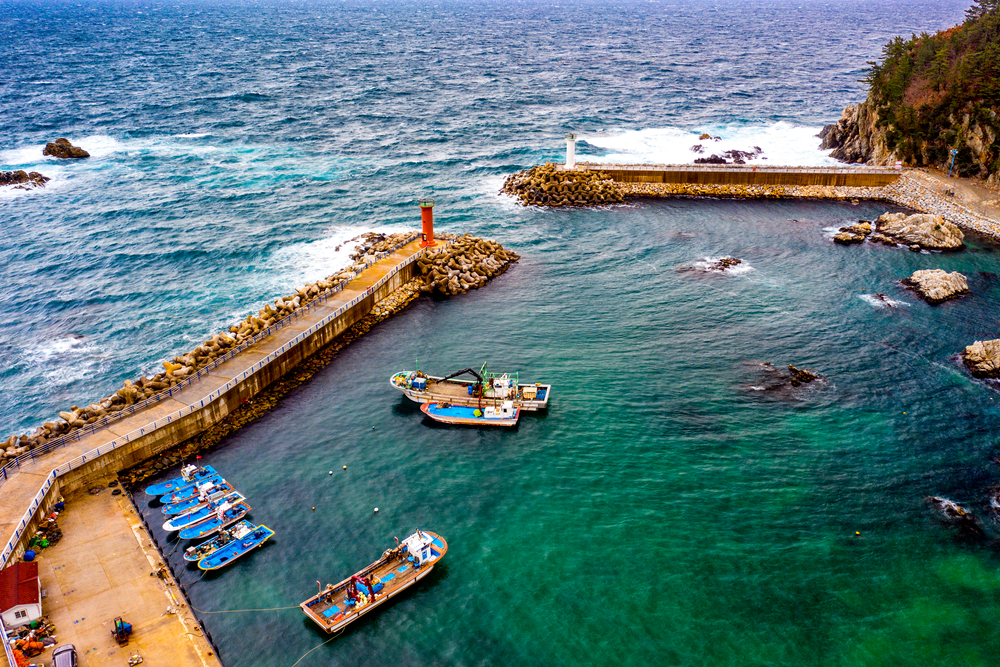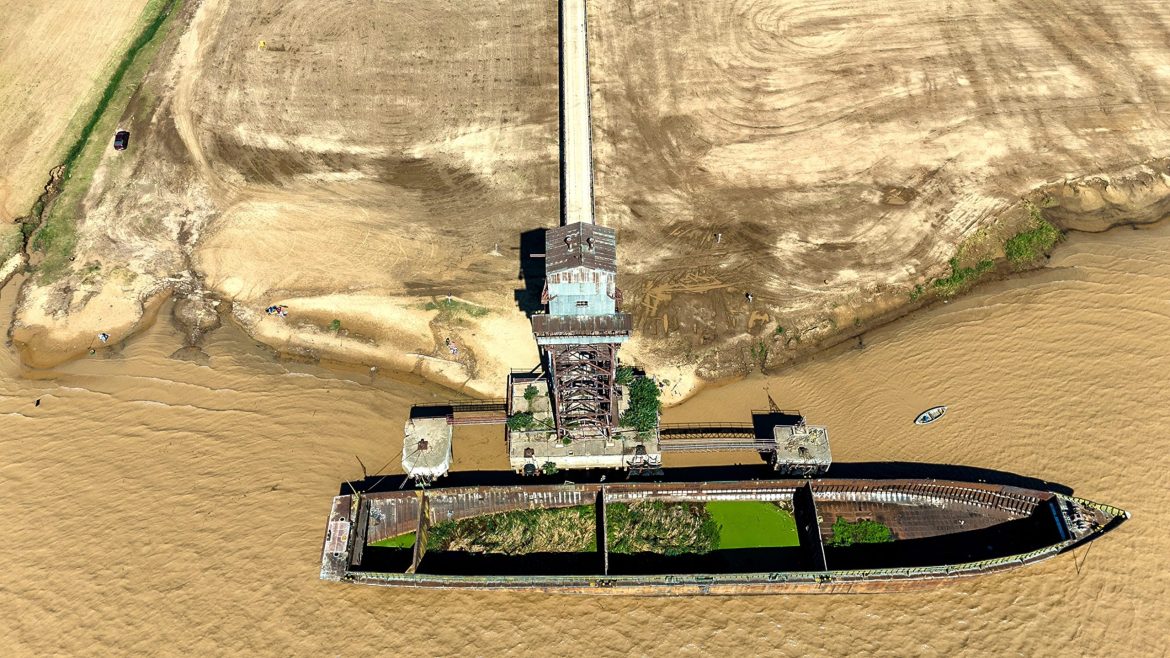Table of Contents
Coastal areas are under constant attack from wave energy. Whether it’s a bustling marina or a quiet beach community, the forces of nature gradually eat away at the shore. But there is a quiet protector floating offshore: the floating breakwater. This innovative structure is reshaping how we protect our coastlines from wave damage and coastal erosion.
Floating breakwaters are not just engineering marvels; they’re also cost-effective, eco-friendly, and adaptable. As climate change continues to cause rising sea levels and increased storm intensity, these systems are becoming a go-to solution for shoreline protection around the world.
What Is a Floating Breakwater?
A floating breakwater is exactly what it sounds like—a buoyant structure anchored offshore that reduces wave energy before it reaches the shoreline. Unlike traditional fixed breakwaters made of stone or concrete, floating breakwaters ride the waves, dampening their energy without disrupting the natural flow of sediment or marine life.
They can be made of concrete pontoons, plastic modules, steel tubes, or environmentally friendly materials like BioHaven’s recycled plastic matrix. These systems are typically moored using chains or anchor piles and are ideal for mild to moderate wave environments.
Why Floating Breakwaters Matter for Shoreline Protection
Floating breakwaters are designed to solve one primary problem: wave energy. When waves reach the shore with full force, they cause erosion, destroy infrastructure, and reduce the usability of waterfront spaces.
By absorbing, reflecting, and dissipating wave energy, floating breakwaters significantly reduce wave height before it reaches the shoreline. This slows down erosion, helps preserve beaches, and protects nearby structures like seawalls, roads, and buildings.
But that’s just the beginning. Here’s why they are gaining popularity:
- Wave reduction: Studies show floating breakwaters can reduce wave heights by 40% to 80% in moderate conditions.
- Tidal adaptability: They move with the tide, offering consistent protection even during storm surges.
- Environmentally friendly: They allow for sediment transport and fish passage, minimizing disruption to marine ecosystems.
- Quick deployment: Because they don’t require deep foundations, they can be installed faster and cheaper than fixed alternatives.
Floating Breakwaters vs. Fixed Breakwaters: A Quick Comparison
| Feature | Floating Breakwaters | Fixed Breakwaters |
|---|---|---|
| Installation Cost | Generally lower | High due to material and foundation requirements |
| Adaptability | Highly adaptable to tides and water levels | Fixed; may be submerged or exposed at high/low tides |
| Environmental Impact | Low; allows sediment and aquatic movement | High; alters flow, can disrupt ecosystems |
| Wave Reduction | Effective in moderate wave climates | Effective in high-energy wave environments |
| Maintenance | Requires regular inspection of anchors/moorings | Requires structural monitoring and repair |
| Deployment Speed | Fast | Slower due to complex construction |
| Relocatability | Can be relocated or expanded easily | Permanent |
The Design Behind Floating Breakwaters
Designing a floating breakwater involves more than just dropping some pontoons in the water. Engineers must consider wave climate, water depth, tidal range, sediment movement, and site-specific challenges.
Shape and Structure
The most common design is the box-type pontoon, which is typically rectangular and hollow, offering a stable and predictable performance against wave action. Some designs incorporate perforated walls that allow a portion of the wave to pass through, dissipating energy gradually and reducing the overall wave force. Others use curved surfaces to redirect and scatter wave energy away from sensitive shorelines. There are also systems that consist of linked modules, which provide flexibility and scalability, making them suitable for large-scale coastal protection projects where adaptability is key.
Anchoring System
Anchors must hold the structure in place during both normal conditions and storms, ensuring stability and performance throughout varying marine environments. Common anchoring systems include chain anchors, which offer flexibility and strength; helix anchors, which screw into the seabed for a firm hold; and piled moorings, which use driven piles to secure the breakwater. The choice of anchoring system depends on several factors, including the type of seabed, water depth, and the expected wave forces the structure will endure. Proper anchoring is essential to prevent drift and ensure long-term functionality of the floating breakwater.
Materials
Materials used in floating breakwaters vary widely depending on the application, environment, and design goals. Reinforced concrete is often chosen for its high durability and strength, making it suitable for large installations and high-load environments. HDPE plastic is another popular option due to its lightweight nature and resistance to corrosion, especially in saltwater settings. Steel is used for more heavy-duty performance, particularly where structural rigidity is critical. For environmentally conscious projects, eco-composites like BioHaven’s matrix are gaining popularity. These materials not only reduce wave energy but also promote vegetation growth and support aquatic life, blending engineering with ecological restoration.

Breakwaters reduce wave energy by up to 80%, creating calmer zones that prevent coastal erosion and protect marine infrastructure. Understanding how breakwaters work is essential for effective shoreline stabilization and long-term coastal resilience.
How They Reduce Waves and Combat Erosion
Floating breakwaters reduce wave height through a combination of reflection, dissipation, and overtopping. When waves encounter the breakwater, a portion of the energy is reflected back offshore, effectively reducing the forward momentum of the water. Simultaneously, the structure’s internal features—such as porous surfaces or built-in friction zones—absorb additional wave energy through dissipation. Finally, any water that overtops the breakwater loses a significant amount of energy in the process, further diminishing its impact on the shoreline. These combined mechanisms significantly reduce the force with which waves reach the coast. In regions where wave heights are less than one meter and wave periods are under four seconds, floating breakwaters have proven to be particularly effective.
Real-World Benefits of Floating Breakwaters
Let’s dive deeper into the actual benefits these structures offer.
1. Protecting Marinas and Harbors
Marinas need calm water to dock and operate boats safely. Floating breakwaters provide reliable protection without permanently altering the seafloor. The SF Marina in Sweden, for example, uses massive concrete pontoons to shield vessels from wave action.
2. Preserving Beaches and Dunes
Communities along eroding coastlines are turning to floating breakwaters to protect public and private beachfronts. When paired with beach nourishment or vegetated dunes, they form a hybrid approach that combines engineering and nature.
3. Enhancing Ecosystems
Projects like BioHaven’s floating islands serve dual purposes. They absorb wave energy while also supporting wetland plants and aquatic habitats. These “living breakwaters” encourage biodiversity and filter runoff from land.
4. Supporting Renewable Energy
In Malta, researchers are exploring floating breakwaters that also serve as platforms for marine renewable energy. These dual-use systems generate power while protecting the coast—a win-win for sustainable development.
Challenges and Considerations
Floating breakwaters are not one-size-fits-all solutions, and several important factors must be considered during planning and implementation. They perform best in mild to moderate wave environments, and in high-energy coastal areas, they may need to be reinforced or combined with fixed structures for effective performance. Maintenance is another key consideration, as the system’s anchors, connections, and floating elements require regular inspections to ensure stability and functionality. Over time, marine growth and environmental wear can reduce performance, so ongoing upkeep is critical. Additionally, while floating breakwaters usually allow for sediment transport, poor placement can disrupt natural patterns and lead to unintended erosion or deposition. Engineers must conduct thorough modeling and site assessments to mitigate these risks and ensure long-term shoreline stability. Aesthetic considerations are also part of the equation; some communities may object to the visual impact of floating structures. However, incorporating eco-friendly designs with integrated vegetation can help the breakwaters blend more naturally into the environment, making them more acceptable to the public.
What the Future Looks Like
Floating breakwaters are evolving quickly. Today’s designs are lighter, stronger, and more versatile than ever before. Future trends include:
- Multifunctional platforms: Combining wave reduction with solar panels, aquaculture, or public spaces, these platforms offer a sustainable, dual-purpose solution for coastal zones. They can serve as both protective barriers and usable infrastructure, making them ideal for urban waterfronts or community spaces that aim to merge resilience with utility.
- Smart sensors: Real-time wave and structural monitoring technologies are being embedded into floating breakwaters to provide instant feedback on performance and integrity. These sensors can detect wear, displacement, or unusual wave patterns, allowing for proactive maintenance and adaptive management.
- Eco-integration: Designs are now evolving to serve ecological functions in addition to coastal defense. Floating breakwaters can be constructed with materials and features that support coral growth, fish breeding grounds, and aquatic vegetation, contributing to biodiversity while buffering wave energy.
- Hybrid models: Engineers are increasingly blending floating breakwaters with natural defenses like living shorelines, vegetated berms, and oyster reefs. These hybrid systems harness the strengths of both manmade and ecological features to create more robust, self-repairing, and visually pleasing shoreline protection.
As cities seek more resilient and sustainable infrastructure, floating breakwaters will play an even greater role in the coastal toolkit.
Floating breakwaters are proving that shoreline protection doesn’t need to be rigid or destructive. Their flexibility, speed of deployment, and minimal ecological footprint make them an attractive choice for today’s coastal challenges. They reduce waves. They prevent erosion. And they do it while coexisting with marine life and evolving shorelines. Whether you’re managing a marina, protecting a beach, or planning for sea-level rise, floating breakwaters offer a modern, proven solution.




